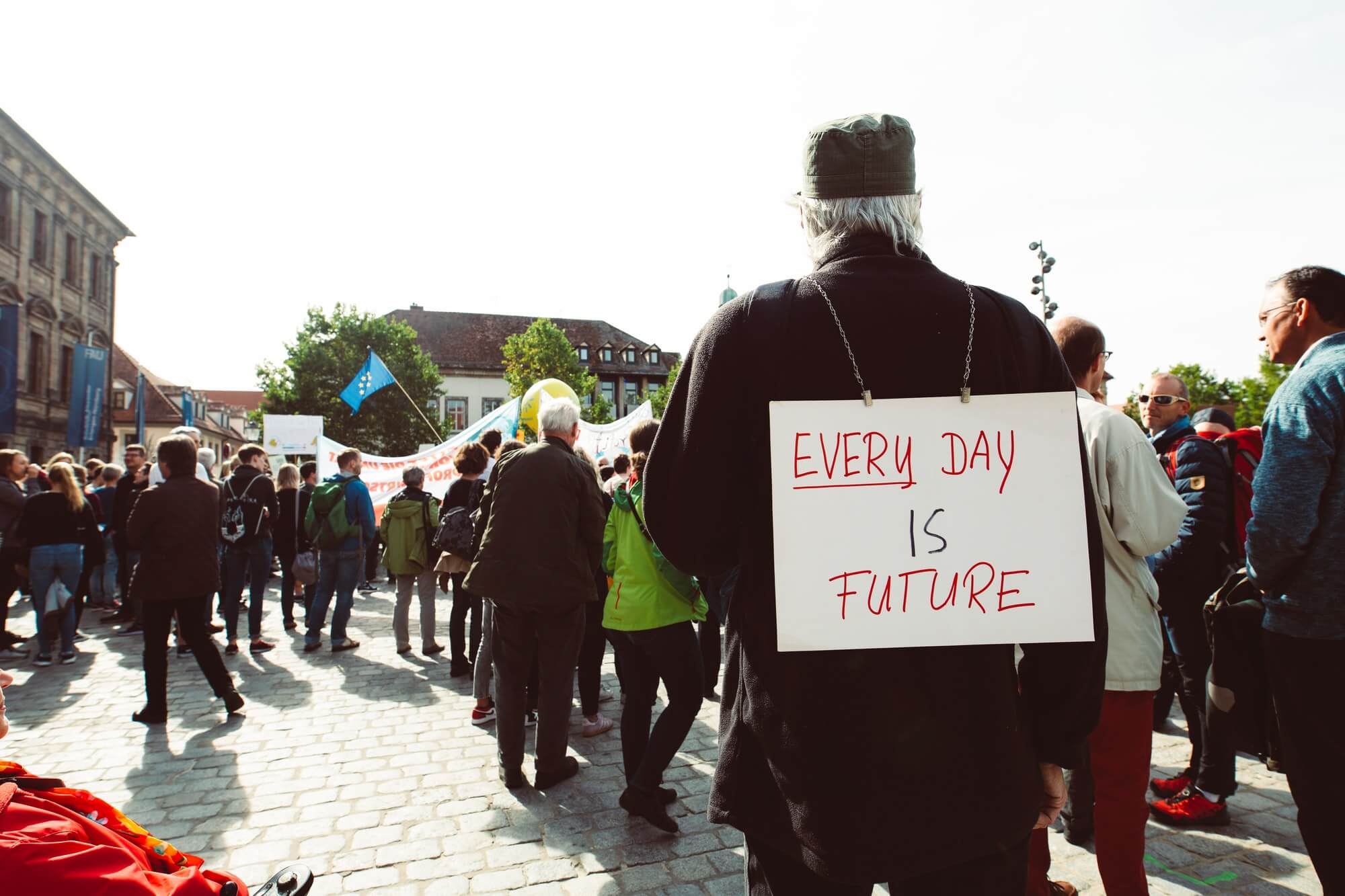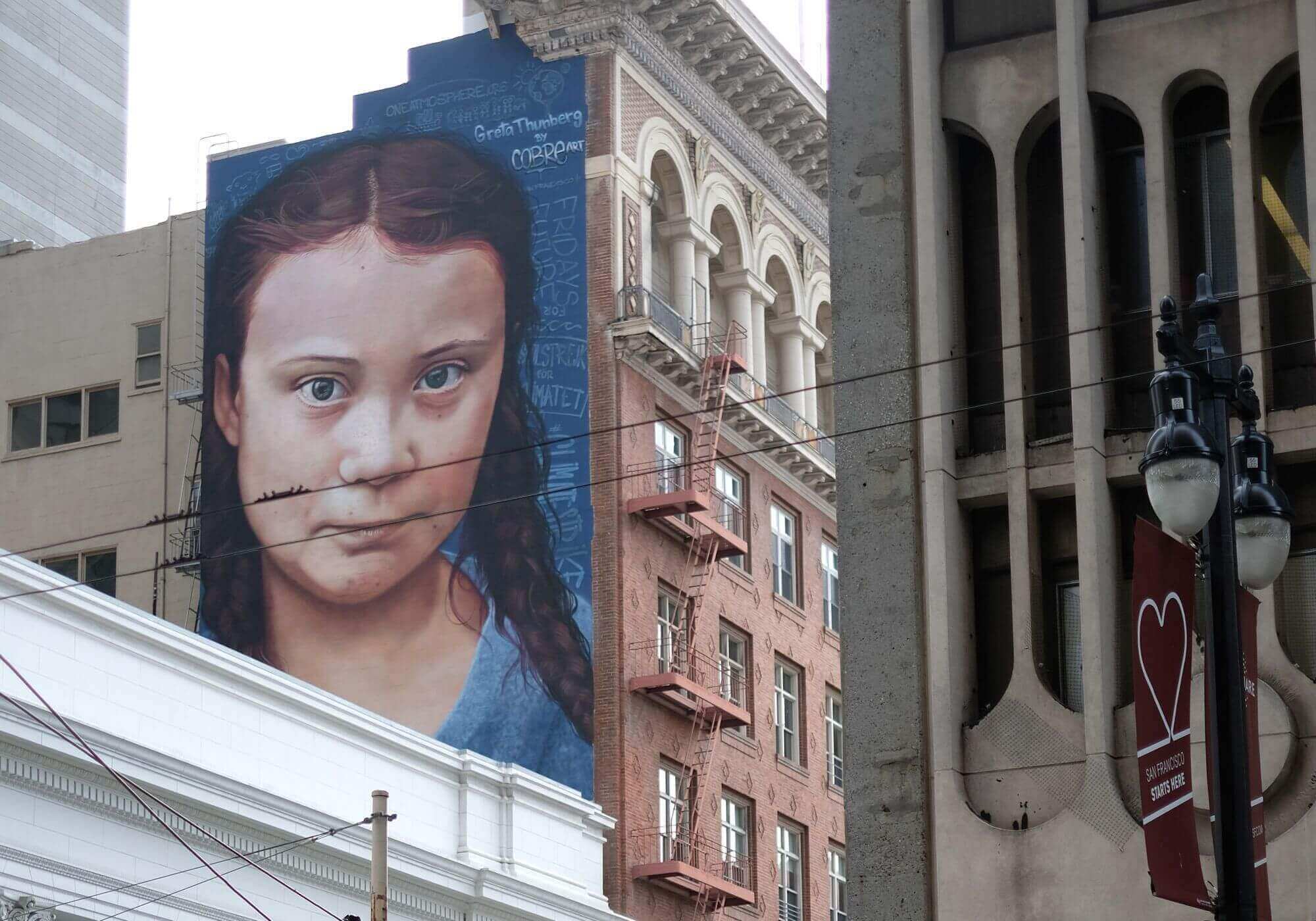Within the last year, climate change has been replaced as the world's number one news topic by the Covid-19 pandemic. While the pandemic triggered widespread radical responses and behavioural changes by governments and individuals to save lives and limit the damage to the global economic system, activists and scientists have long called for similarly drastic interventions to curb climate change.
The man-made causes and severe consequences of climate change have been extensively researched and known to the general public for decades. Yet sufficient political and individual action to halt the trend is still not in sight. One of the reasons, I argue, is that climate change has not been presented as a powerful brand that people want to engage with.
Greta Thunberg puts a face to climate change
When a young Swedish climate activist first emerged in 2018, a phenomenon took hold: Greta Thunberg. Her visual presence gave climate change a face, through her appearance she dominated the climate discourse in 2018-2019 in such a way that the public connected the issue of climate change directly to her and the Fridays For Future movement. Climate change underwent a re-branding: suddenly, climate change was no longer the distant, scientific problem, but the most pressing challenge requiring immediate action globally.
In 2018, Greta Thunberg, then 15 years old, launched her first school strike for the climate in front of the Swedish Parliament in Stockholm. It was to become the first step in changing the narrative on climate change, culminating just a year later in the largest climate demonstration in world history with millions of participants.
In my research, I analysed a selection of Thunberg's most significant and shared images to define how her image is constructed from a branding perspective. Her visual representation is mainly composed of three images.
- Thunberg as a young girl, partly looking uncomfortable, vulnerable or innocent.
- Thunberg as a strong young woman, confidently – and sometimes loudly and aggressively – fighting for her cause.
- Thunberg as the knowledgeable prophetess who dedicates her life to the cause and inspires her faithful followers to do the same.
Together, these three images compose a diverse yet coherent public image of Greta Thunberg. Each photo reproduces the sense of urgency and authenticity that surrounds her activism.
Trigger for concrete political action
What followed was concrete political action such as the European Green Deal, but also increased awareness and behavioural changes by many individuals to do their part to mitigate climate change by, for example, reducing flights, turning vegetarian or buying second-hand clothes.
Then, of course, when COVID-19 spread around the world in early 2020, it moved to the top of the agenda for politicians and the media. The pandemic showed how quickly governments can pass radical laws and implement far-reaching measures – not to mention financial bailouts – to defuse a crisis.
And citizens around the world were willing to drastically change their individual behaviour by wearing masks, keeping their distance from others in public and reducing their social contacts from one day to the next.
Climate change and COVID-19 are both deadly global crises that require immediate and comprehensive action by policymakers, businesses and individuals.
So why did we manage to deal with COVID-19 so quickly? How did we suddenly embrace all these changes and adapt our behaviour when politicians had always told us that radical change was impossible? Why have we not yet applied similar mechanisms to stop climate change?
One important reason is certainly the immediate threat to people's lives that came like a wave to all corners of the world. But the branding of the pandemic is also crucial, and the images that represent it, which have shaken us all emotionally and intensified our fears.
In their core identities, COVID-19 and climate change are to some extent comparable in that they pose a threat to the lives of millions of people.
But while COVID-19 is visibly spreading around the world and is relatively easy to communicate, climate change is more complex and requires more background knowledge about the different causes and interconnected consequences to really develop compelling communication and a strong brand around it. Before the Fridays For Future movement, climate change was mostly portrayed through scientific articles or images of polar bears, melting ice caps or smoking industrial chimneys - all topics that are related to climate change but show it as a distant issue in the visual representation. Not strong enough to motivate behavioural change among people in the Global North, who bear the main responsibility for CO2 emissions.

The Corona pandemic was collectively branded
Although Greta Thunberg and the Fridays For Future movement were a wake-up call for many, it was not enough to bring everyone along as COVID-19 does. The pandemic reached all corners of the world and was collectively branded. It has serious consequences for – by and large – everyone; and that makes it even scarier.
The menacing identity of COVID-19 was communicated through powerful images that had a lasting effect on us. Who wouldn't be touched by the photos of nurses and doctors tirelessly battling the virus to save patients' lives? Exhausted patients suffering and dying in their hospital beds without the chance to say goodbye to their loved ones. Military trucks carrying coffins away from hospitals. Improvised morgues and anonymous mass graves in all parts of the world. This list could go on.
These photos are horrifying and have burnt themselves into our collective memory. They show the harsh truth of the pandemic and, yes, they help put COVID-19 as a powerful – yet horrific – brand in all our minds.
Facing this reality can help us move forward and learn from the pandemic.
I have argued in this article that branding theory can help us break down the complexity and offer an understanding of the different crisis responses to COVID-19 and climate change. Since visuality plays such an important role in brand image and engagement, one might ask if we should paint a more dramatic picture and share more severe photos of climate change impacts to provoke more action.
Surely we shouldn't.
The harsh visuals of the pandemic made a strong impression on people and provoked the necessary quick action from everyone in the short term, but it is not a model that should be repeated. Yes, we need to reinforce climate change and its mitigation as a brand, but we should not add more negative energy to people's exhaustion and mental tension. The shock of the pandemic will stay with us for a long time. We need to seize the moment now and create positive stories of change to inspire people and restore their hope for a better future.
Creating a positive image around climate action
Only if we create a positive brand image for climate action will we succeed in inspiring enough people to make the journey. If not, the next global crisis will be just around the corner, with even more dramatic and irreversible consequences for us all.
Philipp Loeken holds an MA in Visual Culture from the University of Copenhagen and a BA in Political Science and Communication Studies from LMU Munich. As part of his thesis, he researched Greta Thunberg's rebranding of climate change. Philipp also works as a consultant for Dalberg Media in the areas of sustainability, global development and communication. For questions, especially about his Master's thesis, he can be reached at this address: loeken.philipp@gmail.com.
Translated by Sayanti Sengupta



















